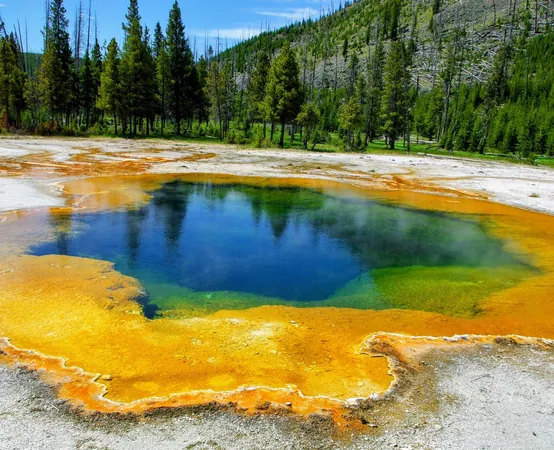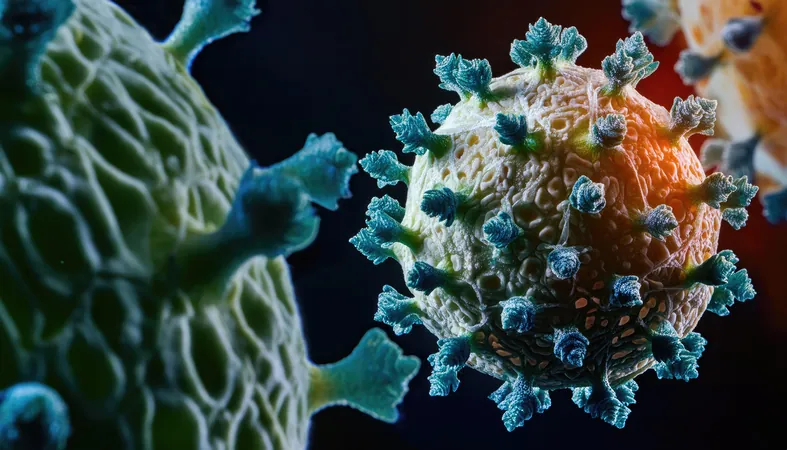
Unlocking the Mystery of Microplastics: How Biofilms Could Revolutionize Pollution Tracking
2025-06-08
Author: Jia
The Hidden Power of Biofilms
Biofilms—those thin, sticky layers crafted by microorganisms—may hold the secret to understanding the movement and settling of microplastics in our environment and even within our bodies. As scientists race to grasp where these troublesome particles end up, the challenge has proven formidable, influenced by factors like water flow and sediment structure.
A Game-Changer from MIT
Researchers from the Massachusetts Institute of Technology (MIT) discovered that biofilms play a more significant role in microplastic dynamics than previously believed. These microbial layers often coat sandy riverbeds and shorelines, fundamentally altering how microplastics interact with the substrate.
Old Methods vs. New Realities
Traditionally, experiments on microplastic movement relied on bare sand. However, MIT researchers argue that natural environments are teeming with life. Bacteria, fungi, and algae produce structures known as extracellular polymeric substances (EPS), which coat surfaces and redefine riverbed behavior.
Revolutionary Experimentation
The team designed a study to examine how EPS impacts microplastic accumulation. They utilized a flow tank filled with fine sand, conducting tests with both bare sand and surfaces coated with biofilm-like materials. Simulated mangrove roots were represented by vertical plastic rods.
As water infused with tiny plastic particles flowed for three hours, the researchers later illuminated the sand bed under ultraviolet light, allowing them to capture precise measurements of plastic concentrations.
Surprising Findings: Less Biofilm, More Plastic
Two key revelations emerged from their study. First, around the rod-like representations of plant roots, turbulence was observed to reduce plastic accumulation. More intriguingly, in biofilm-coated sand, microplastics were less likely to settle at all.
"These biological films fill the pore spaces between sediment grains," noted MIT postdoctoral researcher Hyoungchul Park. "This exposure to flow forces keeps the microplastics suspended, preventing them from embedding deeply in the sediment."
Implications for Pollution Control
The implications of this discovery could be monumental for pollution monitoring and control. Co-author Heidi Nepf explained that biofilms hinder microplastics from accumulating in riverbeds. Instead, they remain on the surface, making them easier to transport elsewhere.
"If we observe two rivers with a microplastic spill, the sandy or gravelly river is likely to retain more plastics compared to the muddier river with abundant biofilm," Nepf elaborated, hinting at a potential paradigm shift in how scientists approach pollution cleanup and strategy.
Spotting Vulnerable Hotspots
Mangrove ecosystems serve as prime examples of these dynamics. Park suggests that the sandy peripheries of these environments may evolve into microplastic hotspots. Due to their reduced biofilm presence and greater sand exposure, these areas facilitate microplastic settling.
Identifying such vulnerable zones is crucial for directing cleanup efforts and minimizing environmental risks.
Strategic Conservation in the Face of Plastic Pollution
By pinpointing areas most susceptible to plastic accumulation, scientists and policymakers can enhance conservation strategies and allocate resources more effectively. This targeted methodology could ultimately slow down the proliferation of microplastics in delicate ecosystems.
This groundbreaking study was published in the journal Geophysical Research Letters, paving the way for a deeper understanding of how to combat plastic pollution.



 Brasil (PT)
Brasil (PT)
 Canada (EN)
Canada (EN)
 Chile (ES)
Chile (ES)
 Česko (CS)
Česko (CS)
 대한민국 (KO)
대한민국 (KO)
 España (ES)
España (ES)
 France (FR)
France (FR)
 Hong Kong (EN)
Hong Kong (EN)
 Italia (IT)
Italia (IT)
 日本 (JA)
日本 (JA)
 Magyarország (HU)
Magyarország (HU)
 Norge (NO)
Norge (NO)
 Polska (PL)
Polska (PL)
 Schweiz (DE)
Schweiz (DE)
 Singapore (EN)
Singapore (EN)
 Sverige (SV)
Sverige (SV)
 Suomi (FI)
Suomi (FI)
 Türkiye (TR)
Türkiye (TR)
 الإمارات العربية المتحدة (AR)
الإمارات العربية المتحدة (AR)